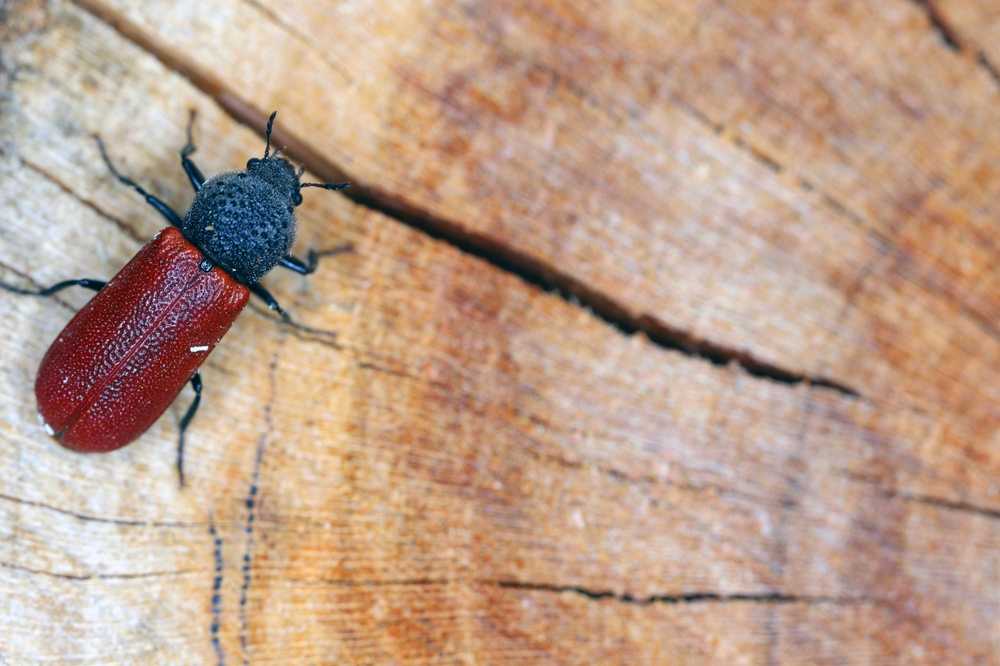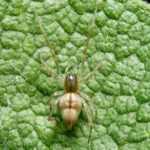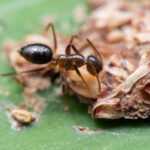How to Eliminate Powder Beetles in Furniture
Powder beetles in furniture can ruin your wood items by creating holes and powder. Learn how to identify these pests, understand the types that infest furniture, and discover ways to eliminate and prevent them.
- Powder beetles are wood-destroying insects that leave small exit holes and fine powder as signs of infestation, necessitating swift action to prevent damage.
- Various species, including true powderpost, false powderpost, and deathwatch beetles, have different wood preferences and characteristics, impacting treatment methods.
- Effective removal methods include heat treatment, cold treatment, and chemical treatments, while future infestations can be prevented by reducing wood moisture and sealing surfaces.
Identifying Powder Beetles in Furniture
Powder beetles, also known as powderpost beetles, are small wood-destroying insects that can wreak havoc on your furniture. These beetles generally have a color that ranges from reddish-brown to black. Their bodies are cylindrical and measure between 1/8 to 3/4 inches in length. Their presence is often first noticed by the small, round exit holes they leave behind in the wood, and while powderpost beetles bite, the damage they cause is primarily due to their wood-boring larvae.
Another tell-tale sign of a powderpost beetle infestation is the fine, flour-like powder that accumulates around these exit holes. This powder is actually frass, a byproduct of the beetle larvae feeding on the wood. Detecting these signs early prevents severe damage to your furniture.
Powder beetles can significantly impact the integrity and appearance of your wooden items. If you notice any of these signs, it’s important to act quickly to protect your furniture from further harm.
Types of Powder Beetles Affecting Furniture
Several types of powder beetles can infest your furniture, each with unique characteristics and preferences. The main culprits include true powderpost beetles, false powderpost beetles, and deathwatch beetles.
Understanding the differences between these species can help you identify and address infestations more effectively.
True Powderpost Beetles (Lyctinae)
True powderpost beetles and wood boring beetles are easily identifiable by their elongated bodies and visible head and eyes from above. These beetles prefer hardwoods like cherry, walnut, oak, ash, and hickory. Females lay their eggs in the pores of untreated wood surfaces or cracks, where the newly hatched larvae can easily access the wood. Wood-boring insects can also be a concern in similar environments.
The larvae feed on the wood, creating tunnels and leaving behind fine powder. Over time, this can cause significant structural damage to your furniture. Early detection and treatment are essential to prevent extensive damage.
False Powderpost Beetles (Bostrichidae)
False powderpost beetles, with their distinctive hump-backed appearance, can infest both hardwoods and softwoods. These beetles are typically dark brown to black, with some individuals showing reddish parts. Adult powderpost beetles vary in size, measuring between 1/8 to 1/4 inch. Some species can grow significantly larger, reaching lengths of up to 2 inches.
These beetles create tunnels in wood to lay their eggs, utilizing pores or cracks to deposit them. The lifespan of false powderpost beetles can range from two to twenty years, allowing them to cause extensive damage over time.
Deathwatch Beetles (Anobiidae)
Deathwatch beetles, including adult beetles, are known for their reddish to dark brown color and their association with older, seasoned wood. These beetles belong to the Anobiidae family and often target wood in older buildings and furniture.
Females lay their eggs in the pores of wood or in exposed wood, where the larvae can easily burrow and feed, often creating an exit hole. This activity can cause significant damage to antique furniture and other wooden items over time.
Causes of Powder Beetle Infestations in Furniture
One of the primary causes of powder beetle infestations is the moisture content in wood. Maintaining wood moisture levels below 20% is essential to deter these pests. Some species thrive in wetter conditions, making it crucial to keep wooden items dry.
Improper storage of wooden items can also lead to infestations, especially when wood is kept in humid environments. Powder beetles favor untreated wood surfaces for egg-laying, making it important to apply a coat of varnish or paint to prevent infestations.
The presence of infested wood nearby can facilitate the spread of powder beetles to your furniture. Environmental factors, such as the availability of wood surfaces for egg-laying, also play a significant role in powder beetle presence.
Detecting Powder Beetle Activity
Detecting powder beetle activity early can save your furniture from severe damage. Fresh powder that is light in color and appears near new, unweathered holes is a clear sign of an active infestation. The presence of small, fresh piles of frass also indicates ongoing beetle activity.
Mark the holes, clean the powder, and recheck for new activity over time to determine if an infestation is still active. Reappearance of sawdust after cleaning signifies that the infestation is still present and requires immediate attention.
Methods to Remove Powder Beetles from Furniture
Several methods can effectively eliminate powder beetles from your furniture. These include heat treatment, cold treatment, and chemical treatments. Each method has its advantages and is suitable for different levels of infestation.
Heat Treatment
Heat treatment is an effective method to eradicate powder beetles from infested furniture. Maintaining a temperature range of 120 to 140 degrees Fahrenheit ensures the thorough elimination of beetles. Items can be heated for a duration of 24 hours to ensure all beetles are killed.
This method is particularly useful for treating large items that cannot be easily replaced. However, it is essential to control the temperature carefully to avoid damaging the furniture.
Cold Treatment
Freezing is another effective method to kill powder beetles in furniture. Items should be frozen at a temperature of 0°F for a minimum of three days to ensure all beetles are killed. This method is suitable for smaller items or those that can be easily moved to a freezer.
Cold treatment is a non-invasive method that does not involve chemicals, making it a good option for those concerned about chemical exposure.
Chemical Treatments
Chemical treatments, such as fumigation, are used to eliminate severe infestations of powderpost beetles. Insecticides, particularly those based on borates, are effective for treating infested wood. These chemicals penetrate the wood and kill the beetles and larvae.
When handling frass from powder beetles, it is important to wear a mask or respirator and gloves to avoid health issues such as allergic reactions, respiratory irritation, and skin irritation.
Preventing Future Infestations
Preventing future infestations starts with reducing wood moisture content to below 20%. Sealing wood surfaces with varnish or paint can also help prevent powder beetles from laying eggs in the wood. Using sanded and varnished wood makes your home less appealing to these pests.
Good sanitation practices are essential to prevent pest infestations. Regular cleaning and maintenance can help keep your home free from powder beetles. Before bringing any wood materials indoors, inspect them thoroughly to avoid introducing powder beetles into your home.
If you have infested wood, dispose of it properly by burning or taking it to a dump to prevent the spread of powder beetles, especially if it includes dry wood.
When to Call a Professional
Consider fumigation for severe, widespread powderpost beetle infestations. If you see powderpost beetle damage in your home, call a professional immediately. A licensed technician will assess the beetle problem and formulate a treatment plan tailored to your needs.
Chemical treatments, such as fumigation, might be necessary for severe infestations. A pest control professional can also assess the damage caused by powderpost beetles in hardwood and recommend the best course of action.
Tackling powder beetle infestations in your furniture requires knowledge, vigilance, and timely action. By understanding the types of powder beetles, their causes, and the methods for detection and removal, you can effectively protect your wooden items. Don’t hesitate to seek professional help to ensure a thorough and effective solution. Take action now to safeguard your furniture and keep your home pest-free.
Frequently Asked Questions
What are the signs of a powder beetle infestation in furniture?
The presence of small, round exit holes, fine powder resembling flour, and fresh piles of frass around these holes clearly indicate a powder beetle infestation in your furniture. It is crucial to address these signs promptly to prevent further damage.
What types of wood do true powderpost beetles prefer?
True powderpost beetles favor hardwoods, specifically cherry, walnut, oak, ash, and hickory. Protecting these types of wood is crucial to prevent infestations.
How can I prevent powder beetle infestations in my furniture?
To prevent powder beetle infestations in your furniture, ensure wood moisture content is below 20%, seal surfaces with varnish or paint, and thoroughly inspect wood materials before bringing them indoors. Taking these proactive steps is crucial for safeguarding your furniture.
When should I call a professional for a powder beetle infestation?
You should call a professional immediately if you notice any damage from powderpost beetles in your home or if the infestation appears severe and widespread. Taking swift action is crucial to prevent further damage.
What chemical treatments are effective for powder beetle infestations?
Fumigation and borate-based insecticides are effective treatments for powder beetle infestations in wood. These methods help eradicate the pests and protect your property.




